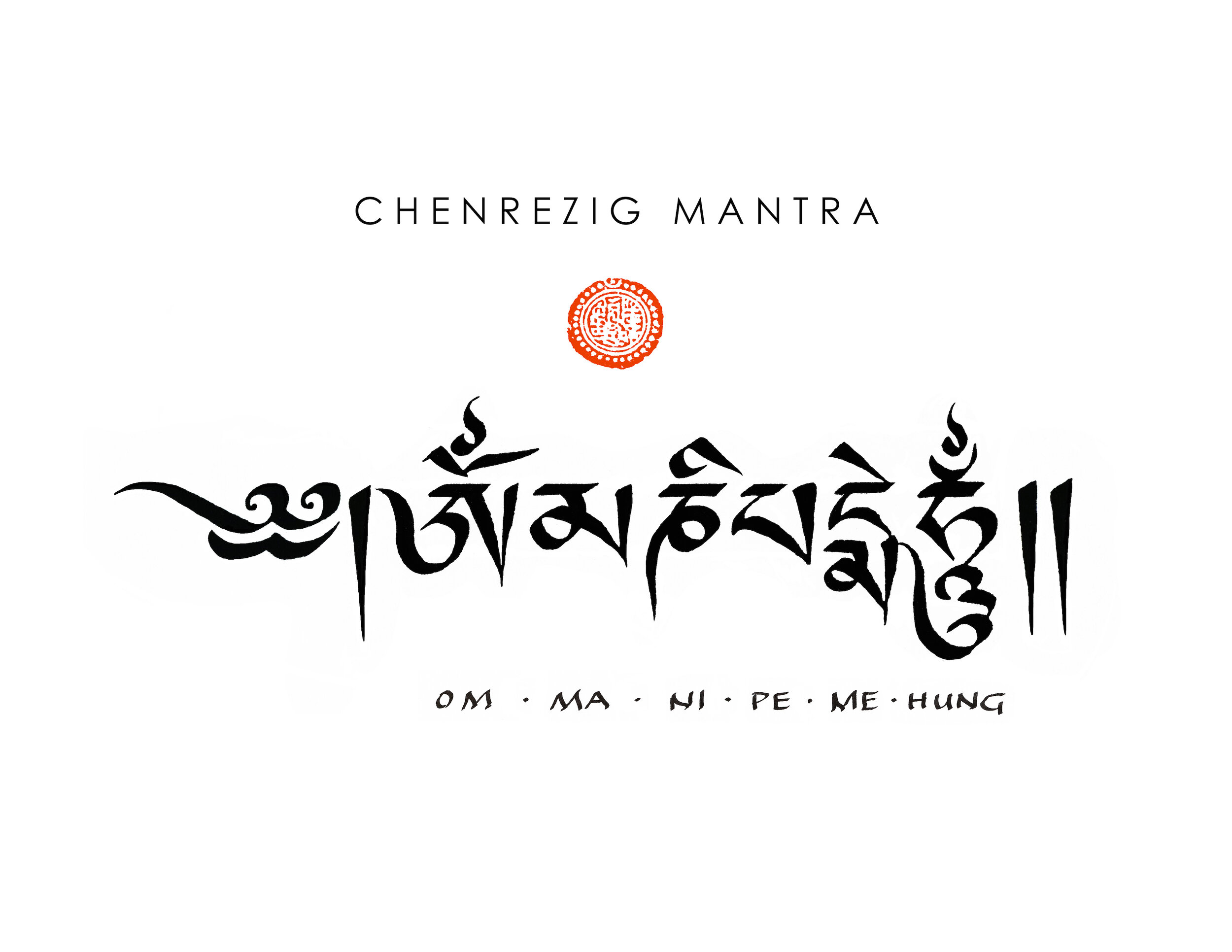T I B E T A N A L P H A B E T, S E E D S Y L L A B L E S, M A N T R A S, A N D M A N I S T O N E S
Dear Reader: The calligraphy images in this section were created by Sanje Elliott, and are offered for free download for you to print for personal use.
T I B E T A N A L P H A B E T - In the 7th Century, Tibet had no written alphabet. The great King Songsten Gampo married two Buddhist princesses, and to appease them he sent his minister Thönmi Sambhota to India to create an alphabet based on Sanskrit in order to translate Buddhist texts into Tibetan. The Tibetan alphabet is composed of thirty consonants to which there are four vowel markers which are attached either above or below the consonants.
Each consonants is pronounced with the vowel, “ah”. The other four vowel are indicated with vowel markers either above or below the consonants.
The complete description of the history of the Tibetan Alphabet can be found in the Manuscripts, Calligraphy category.
S E E D S Y L L A B L E S - The function of seed syllables is to provide a focus for the essence of a deity or a mantra. For example, the seed syllable HRIH for presence of the deity Avalokitesvara (Chenrezig) and for the mantra, OM MANI PEME HUNG. Often you will see this mantra with the seed syllable at the end of it: OM MANI PEME HUNG / HRIH.
In the sadhana of Chenrezig the meditator visualizes the seed syllable HRIH, which germinates the essence of the body of Avalokitesvara.
M A N T R A S - Mantras, similar to seed syllables, may not always be translatable. Most of them have their origins in ancient India, and are almost always written in Sanskrit. The function of mantras is to invoke the essence of the deity. Using the spoken word, in addition to visualization and other techniques, such as mudra. The sound of mantra is potent and sometimes may even have a magical quality. OM MANI PEME HUNG is the most beloved of all mantras, and is chanted daily by almost all Tibetans— when you see someone spinning a prayer wheel they are most likely chanting OM MANI PENE HUMG to invoke the spirit of Chenrezig and compassion.
M A N I S T O N E S - Mantras inscribed onto rocks are called Mani Stones— the majority of which are the mantra of Chenrezig: OM MANI PEME HUNG. Everywhere one goes in Tibet, even to the highest altitudes, one will find mani stones and prayer flags, showing the Tibetan devotion to these beloved symbols. Creating and carving mani stones is a devotional practice and an offering to one’s personal deities.









































